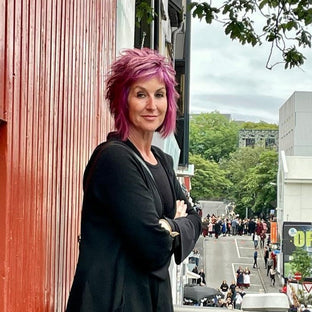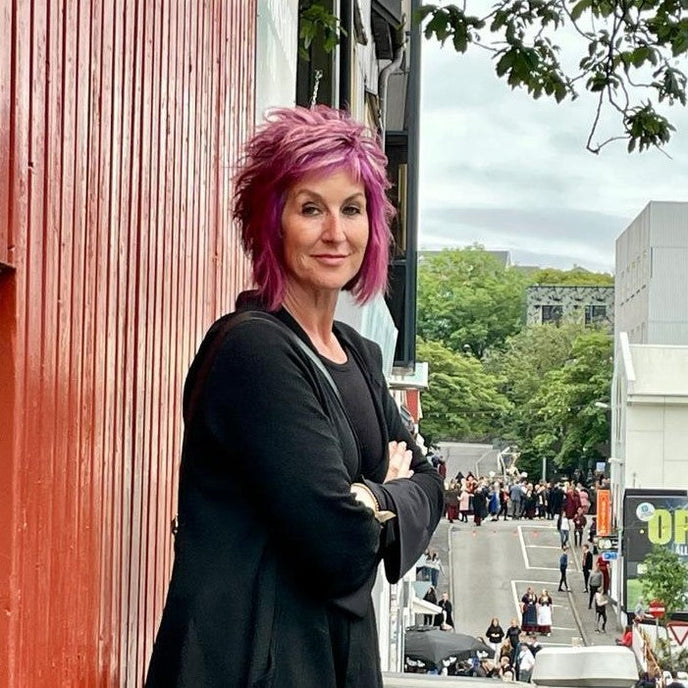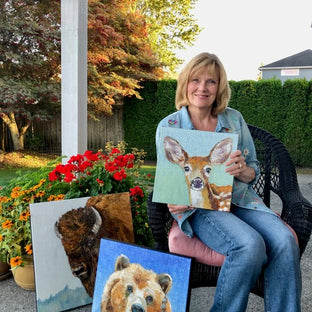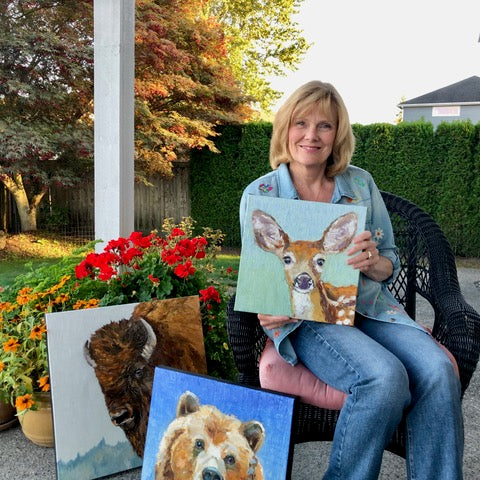A Creative Interview With Artist Shannon Amidon
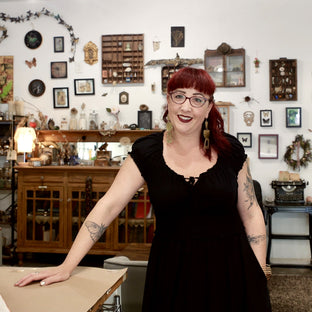
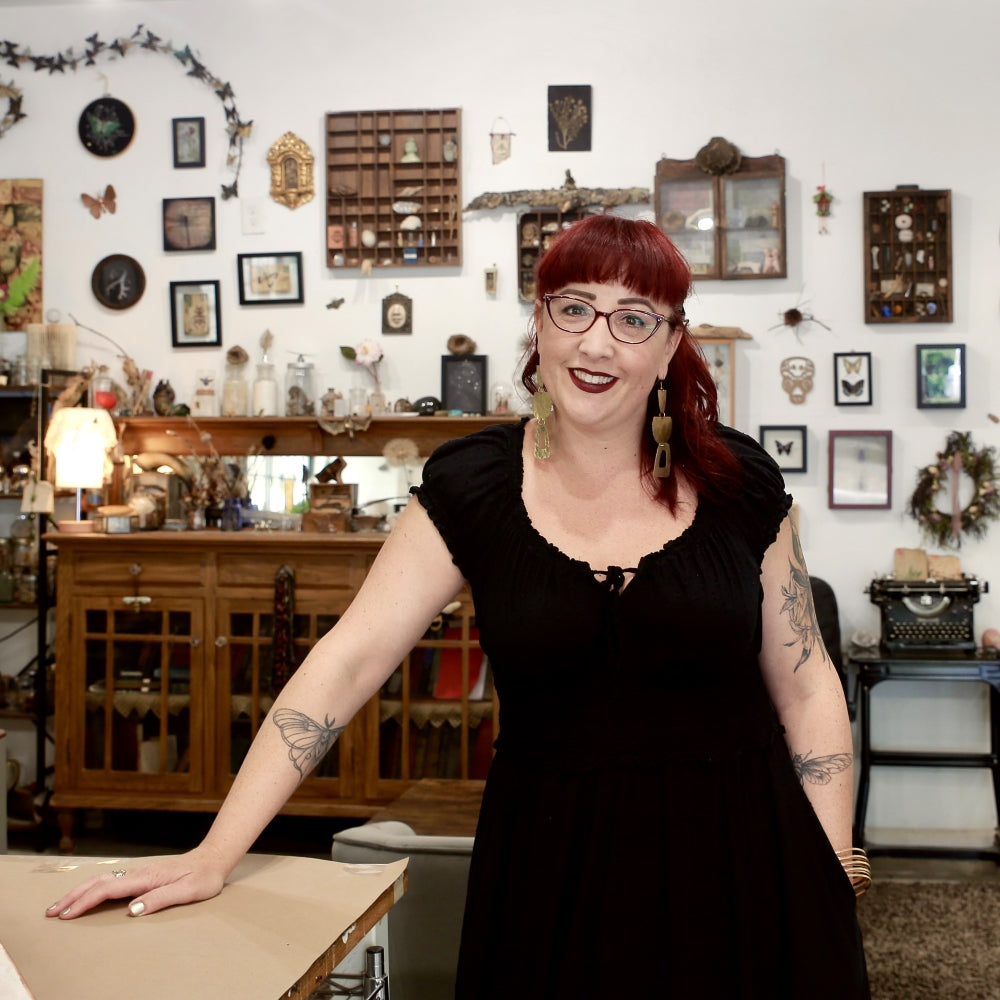

"I’m drawn to materials that carry their history, such as beeswax, botanical elements, and vintage ephemera. Each piece is a kind of quiet collaboration between me, the materials, and the land I live on."
Artist Shannon Amidon creates encaustic art that explores the cycle of life and the wonders of nature. She spent her childhood immersed in the outdoors. These early experiences shaped her personal, political, and aesthetic concern with the current ecological challenges. In her art, Shannon focuses particularly on the decline of pollinators and other insects due to habitat loss. She works in a converted garage studio she built from scratch behind her house. When not making art, Shannon spends her time running an artist residency and retreat program in Portland, Oregon.
In this interview, Shannon shares her deep connection with nature and how it manifests in her art.
Please tell us about yourself. What’s your home life like? What are your special interests?
I’ve been a professional visual artist for over 20 years, creating work that’s deeply rooted in curiosity, nature, and storytelling. I live on a beautiful 4.5-acre property in Oregon, which serves as a constant source of inspiration for both my art and daily life. When I’m not in the studio, you’ll find me gardening, tending to my bees, roller skating, or enjoying adventures with my family and friends. I’m also passionate about homesteading and finding creative ways to live in harmony with the land.
What are you most proud of—whether in art or another part of your life?
Right now, I am most proud of creating and running The Verdancy Project, a multidisciplinary, community-centered initiative dedicated to fostering curiosity and inspiring environmental stewardship. We offer creative residencies, retreats, community art projects, events, and workshops. This is our 5th year, and we have hosted over 80 artists in residence. It’s been incredibly fulfilling to watch it grow into a space where artists connect deeply with nature, explore new ideas, and build lasting community.
Do you have any studio rituals that help you get into a creative flow?
My studio rituals shift with the seasons. In winter, I start by turning on the heater; in the warmer months, I open the big roll-up door to let in fresh air and light. I put on my apron, light my favorite incense, and turn on some music to set the tone. Often, I begin by tidying up, rearranging materials, or clearing a surface, which helps me ease into the creative process and transition into a more focused and intentional state.

How do you structure your day?
I usually start my day around 6 a.m. with meditation, followed by a few hours of computer and admin work before taking my daughter to school. After drop-off, I tend to the garden, watering and checking in with the plants before settling into either studio time or writing, depending on what’s calling to me that day. I typically work until around 4 p.m., when my daughter returns home. The rest of the evening is reserved for family, friends, and community time. I love attending art events in the evenings, whether it’s an opening reception or a performance piece. Portland has such a rich and vibrant creative scene, and I try to take advantage of it whenever I can.
While I have a general rhythm to my days, flexibility is essential. As a working artist, mother, and creative entrepreneur, no two days are exactly the same. I’ve learned to listen closely to my body, to the seasons, and to where the energy is flowing and adjust accordingly. It’s a balancing act, but one that feels deeply meaningful and aligned with the life I want to live.
Where do you find inspiration for your art?
I find inspiration in many places, but the natural world is my greatest and most consistent source. It’s not just the beauty of nature that draws me in; it’s the systems, the cycles, the questions it raises. I’m deeply curious about how things work and why, which often leads me down paths of scientific exploration and learning. I’m also endlessly inspired by other artists, their processes, and the stories they tell through their work. Books are another wellspring of ideas and creative energy for me.
Tell us about your evolution as an artist.
Like many artists, I explored a lot of different mediums before finding my home in encaustic. I began with assemblage and collage, moved into photography, and eventually discovered alternative processes that satisfied my love of experimentation. When I started layering wax onto my photographs, something clicked; it brought mood, depth, and a tactile quality I had been searching for. That discovery led me to encaustic painting, and I haven’t looked back since.
How do you decide when an artwork is finished?
Sometimes I feel like a piece is never truly finished. My typical process is to hang what I think is a finished work on the wall and live with it for a while, sometimes days, sometimes weeks. I like to give the piece space to speak to me, to see if anything still feels unresolved or out of balance. Over time, the artwork reveals whether it needs more attention or is ready to stand on its own. I’ve even been known to revisit and revise pieces years after I first considered them complete.
What is the most interesting observation someone has made about your work?
At a recent opening, someone described my work as enigmatic. I wasn’t sure at first if it was meant as a compliment or a critique, but the more I sat with it, the more I appreciated the observation. I think there’s something powerful about creating work that invites curiosity and doesn’t immediately reveal all its layers. If it leaves space for interpretation or contemplation, then maybe being enigmatic is exactly the right thing.
Is there an artwork from another artist that has had a significant impact on you?
There are so many artists who have influenced me and my practice, but one piece that has had a particularly profound impact is a painting I purchased years ago by local artist Nadja Martens. It depicts a white tiger in the ocean under a starry night sky. I bought it shortly after my father passed away, and I immediately felt a deep connection to it.
At times, the tiger looks as if it’s helplessly sinking to the bottom of the ocean, something that mirrors the weight of my grief. Other times, it appears to be rising from the depths toward the light of the stars, which became a symbol of hope and healing. The painting continues to shift meaning depending on where I’m at emotionally, and I think that’s the mark of a truly powerful work of art.
What’s your favorite museum?
This might be a surprising answer, but my favorite museum is the California Academy of Sciences in San Francisco. While it’s not a traditional art museum, it completely captures my love of science, nature, and wonder, all of which deeply inform my creative practice. From the living roof and the rainforest dome to the natural history exhibits and aquarium, the entire space is immersive and awe-inspiring. It reminds me that curiosity is a creative act in itself, and that art and science are more connected than we often realize.

Is there anything else you’d like to share to help viewers better understand your work?
At the heart of my work is a deep sense of wonder and reverence for the natural world, for the quiet cycles of life and death, and for the unseen connections that bind us to each other and to the earth. I’m drawn to materials that carry their history, such as beeswax, botanical elements, and vintage ephemera. Each piece is a kind of quiet collaboration between me, the materials, and the land I live on.
My hope is that viewers feel a sense of stillness and curiosity when they engage with the work, and perhaps walk away feeling just a little more connected to nature, memory, or even a forgotten part of themselves.
Discover more artist features on UGallery
If you enjoyed this article about Shannon Amidon's life and artwork, we recommend reading about Shyun Song's abstract art and Guigen Zha's modern paintings.




